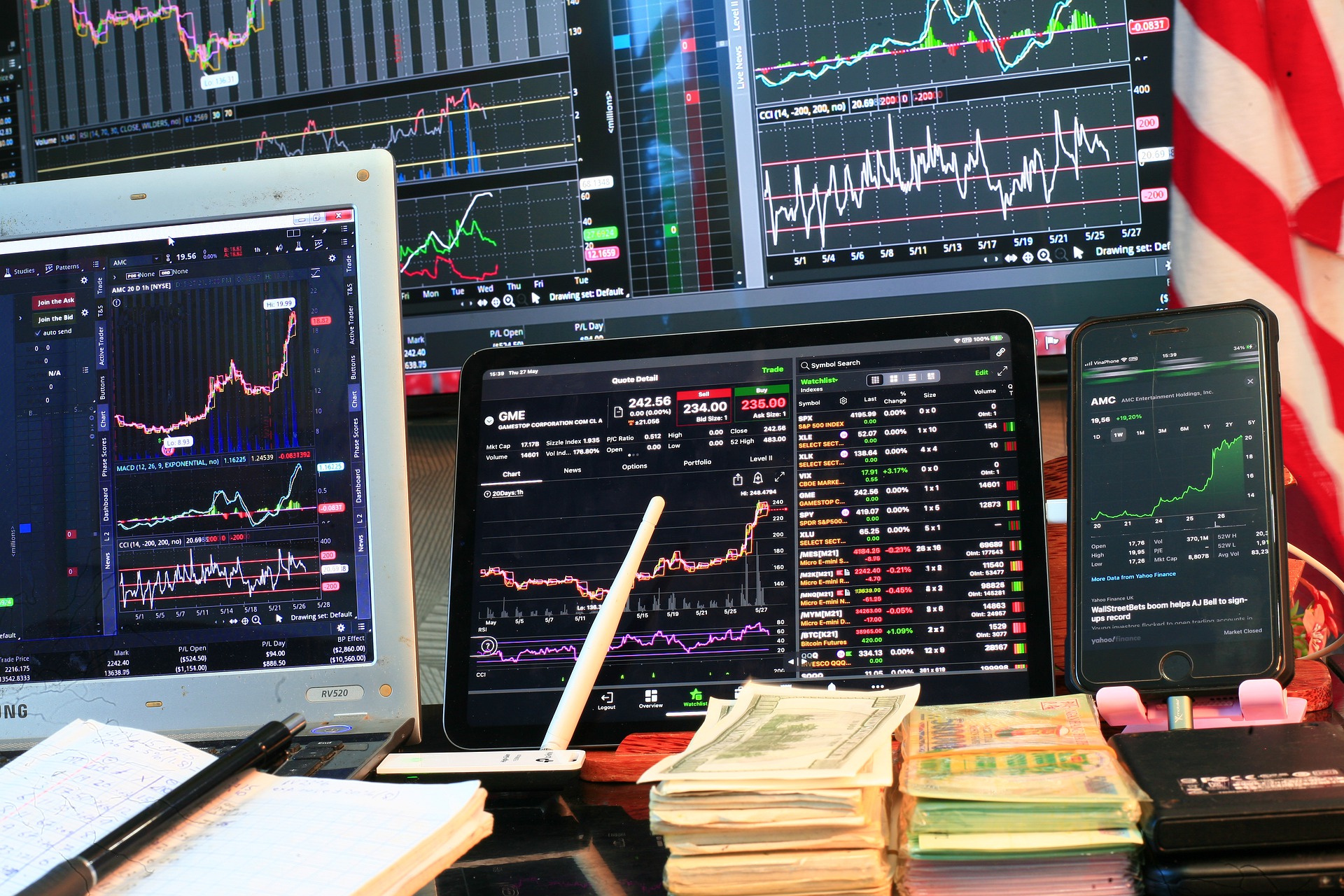EQUITIES
Shares in Asia-Pacific largely declined in Friday trade. Hong Kong’s Hang Seng index led losses regionally as it fell 3.57%. While on the mainland, the Shanghai Composite slipped 2.31%.
Other Asia-Pacific markets also mostly dip, with South Korea’s KOSPI dropped 1.17%, the S&P/ASX 200 in Australia shed 2.34% and Singapore’s Straits Times index traded slipped 1.28%.
Japan's Nikkei 225 bucked the trend, rising 0.69% on its return from a three-day holiday.
Technology stocks in the region sold off, following the tech-heavy Nasdaq Composite’s nearly 5% drop overnight stateside. Shares of Tencent declined 4.53%, Alibaba fell 6.46% and Meituan slipped 5.22%. Hong Kong’s Hang Seng Tech index traded 4.41% lower. The broader risk-off sentiment also extended to electric vehicle stocks, with Xpeng plunging more than 10% while Nio shed 15.17%. In Japan, shares of conglomerate SoftBank Group dropped 1.85%, South Korea’s Kakao slipped 5.17% and Samsung Electronics declined nearly 2%.
U.S. technology mega caps also slumped overnight. Google-parent Alphabet Inc, Apple Inc, Microsoft Corp, Meta Platforms, Tesla Inc and Amazon.com all fell between 4.3% and 8.3%.
Overnight on Wall Street, the Nasdaq posting its biggest one-day percentage decline since June 2020 and its lowest finish since November 2020, to 12,317.69. Dow Jones Industrial Average fell 1,063.09 3.12%, to 32,997.97, and the S&P 500 lost 3.56%, to 4,146.87.
OIL
Oil prices climbed for a third straight session on Friday, shrugging off concerns about global economic growth as worries about tightening supplies underpinned prices ahead of an impending European Union embargo on Russian oil.
Brent and WTI are on track to rise for a second week in a row, buoyed by the EU's proposal to phase out supplies of Russian crude oil in six months and refined products by the end of 2022. It would also ban all shipping and insurance services for transporting Russian oil. The plan still requires unanimous backing from the 27 countries in the bloc.
Meanwhile on supply side, ignoring calls from Western nations to hike output more, OPEC+ agreed to raise June production by 432,000 barrels per day, in line with its plan to unwind curbs made when the pandemic hammered demand.
Brent futures rose 21 cents to $111.27 a barrel, while U.S. WTI crude climbed to $108.46 a barrel.
CURRENCIES
The dollar was headed for a fifth winning week versus major peers on Friday. It edged 0.13% higher to 103.681, putting it up of about 0.4% for the week. It touched 103.94 in the previous session for the first time in two decades.
U.S. yields also rising on expectations of a fast pace of rate hikes. The yield on U.S. 10-year notes was last 3.080% after crossing 3.1% overnight for the first time since November 2018.
Cryptocurrency bitcoin tumbled 8% overnight and hit a 2-1/2-month low. It was last trading around $36,400.
GOLD
Gold prices edged lower on Friday and looked set to fall for a third straight week, weighed down by a robust dollar and rising yields.
Spot gold fell 0.06% to $1,875.80 per ounce, while U.S. gold futures was flat at $1,875.80. Bullion has declined about 1.5% so far this week.
In other metals, spot silver slipped 1.1% to $22.25 per ounce, platinum declined 2.9% to $952.67 and palladium fell 0.6% to $2,174.64.
ECONOMIC OUTLOOK
Asian equity markets tanked to their lowest in seven weeks on Friday, as investors globally shunned riskier assets over fears that Federal Reserve's interest rate hike this week may not be enough to help fight surging inflation and China's reinforcement of its zero-COVID policy could hit growth hard.
Worries about Fed policy moves, mixed earnings from some big growth companies, the conflict in Ukraine and pandemic-related lockdowns in China have hammered stock markets recently, overshadowing a better-than-expected quarterly reporting season.
Chicago wheat futures slid 1% on Friday, but the market was on track for a weekly gain with tightening world supplies supporting prices. Soybeans and corn have lost almost 3% this week.
The U.S. Federal Reserve on Wednesday raised its benchmark rate by half a percentage point, the most in 22 years, though chairman Jerome Powell explicitly ruled out a 75-basis-point raise in a coming meeting. The Bank of England meanwhile sent a stark warning that Britain risks a double-whammy of a recession and inflation above 10% as it raised interest rates on Thursday to their highest since 2009, hiking by quarter of a percentage point to 1%.
New claims for U.S. unemployment benefits increased to a more than two-month high last week but remained at a level consistent with tightening labour market conditions and further wage gains that could keep inflation hot for a while. Investors will focus on the U.S. Labour Department's non-farm payroll numbers for April due later in the day.China’s services sector activity shrunk further in April, contracted at the second-steepest rate on record under the effect of pandemic measures., a private sector survey showed Thursday. The Caixin services PMI declined to 36.2 for April, lower than March’s reading of 42.
Crude prices, meanwhile, shot up as the European Union spelled out some of the details of its plan to ban the use of Russian oil, heightening concerns about supply.
Focus in Europe on Thursday will turn to the Bank of England, which is expected to announce a fourth consecutive interest rate hike to combat soaring prices.














